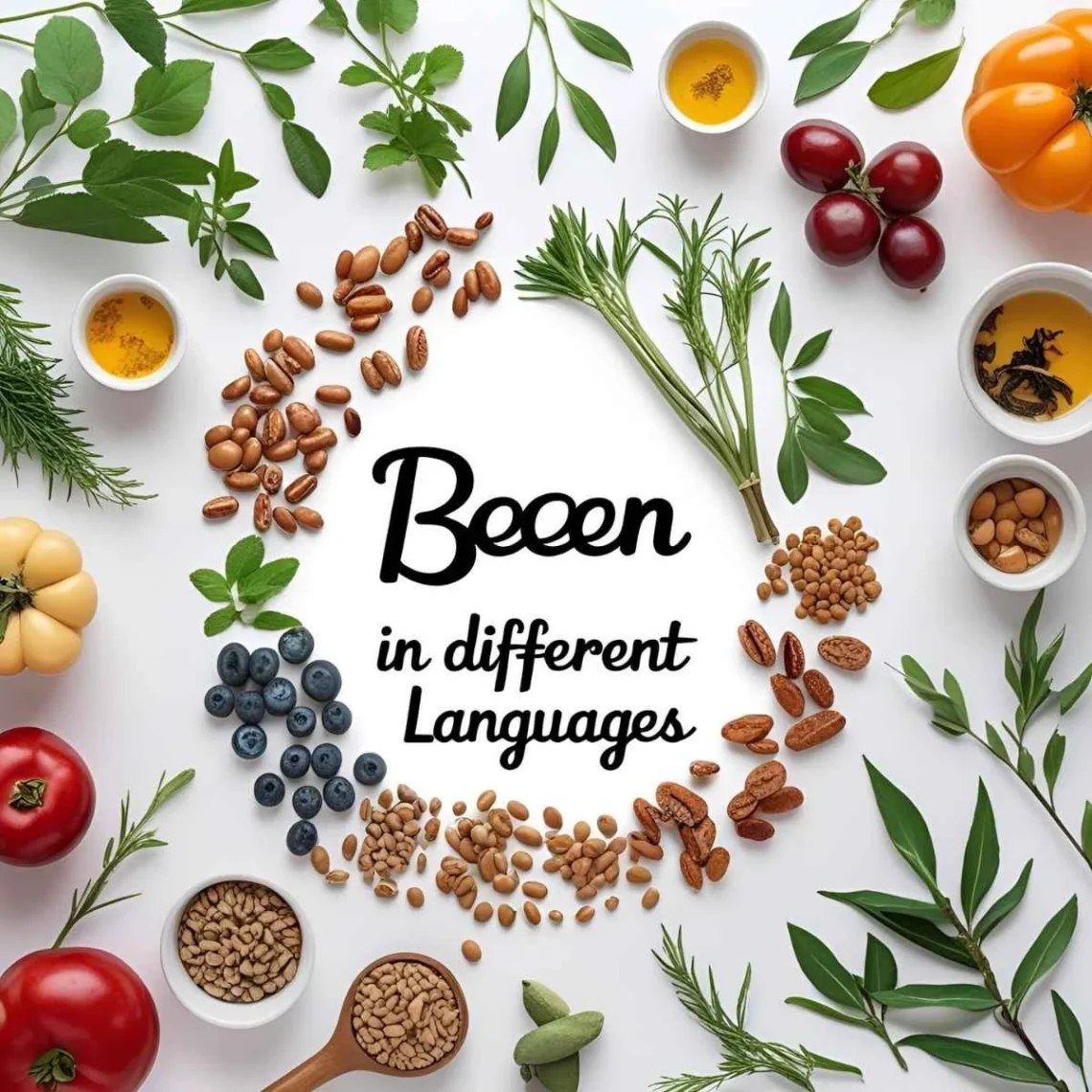Growing up, I remember my grandmother simmering a pot of red beans, their earthy aroma filling the kitchen as she shared stories of her childhood in Mexico, where “frijoles” were a staple of love and sustenance. That simple word, “bean,” carries a world of meaning across cultures—nourishment, tradition, and connection.
Whether it’s a hearty bowl of miso soup in Japan or a spicy bean stew in Ethiopia, beans unite us through shared meals and histories. Let’s explore how the word for “bean” is expressed globally and what it reveals about the cultures that cherish this humble ingredient.
Reference Table: “Bean” in Different Languages
| Language | Word/Phrase | Cultural/Linguistic Insight |
|---|---|---|
| Spanish | Frijol | A staple in Latin American cuisine, tied to family meals. |
| French | Haricot | Refers to various beans, central to dishes like cassoulet. |
| Italian | Fagiolo | Celebrated in hearty Tuscan soups and stews. |
| German | Bohne | A general term for beans, used in traditional soups. |
| Mandarin | Dòu (豆) | Encompasses beans and peas, key in dishes like tofu. |
| Hindi | Rajma | Refers to kidney beans, popular in North Indian curries. |
| Japanese | Mame (豆) | Used in sweets like anko or savory miso dishes. |
| Korean | Kong (콩) | Central to dishes like kongjang (soybean side dish). |
| Arabic | Fūl (فول) | Iconic in ful medames, a breakfast staple in Egypt. |
| Swahili | Maharagwe | Refers to beans in East African stews, often with maize. |
| Zulu | Ubhontshisi | A term for beans, vital in South African diets. |
| Yoruba | Ẹ̀wà | Common in Nigerian soups, symbolizing sustenance. |
| Maori | Pīni | Used in modern dishes, reflecting adaptation of crops. |
| Hawaiian | Kika | Refers to beans in local cuisine, often with rice. |
| Cherokee | Tuya | A traditional crop, integral to Native American diets. |
European Languages: Beans as Culinary Cornerstones
In Europe, the word for “bean” reflects its role in hearty, comforting dishes. For instance, in French, “haricot” refers to a range of beans, starring in dishes like cassoulet, a slow-cooked casserole that brings families together in France. Meanwhile, Spanish uses “frijol,” a term tied to Latin American staples like frijoles refritos, evoking memories of communal meals. In Italian, “fagiolo” is celebrated in Tuscan soups, symbolizing rustic simplicity and abundance. Additionally, German speakers say “Bohne,” a versatile word used in soups and stews, reflecting Germany’s practical approach to hearty cuisine. Thus, these terms highlight beans as a source of nourishment and tradition across European tables.
Asian Languages: Beans in Diverse Culinary Traditions
Asia’s linguistic diversity shapes unique terms for “bean,” each tied to culinary heritage. For example, in Mandarin, “dòu” encompasses beans and peas, central to dishes like tofu and fermented black bean sauces in China. In Hindi, “rajma” refers to kidney beans, beloved in North Indian curries that warm homes in India and beyond. Similarly, Japanese uses “mame,” seen in sweet anko (red bean paste) or savory miso soups, blending tradition with innovation. In Korean, “kong” (soybean) is key to side dishes like kongjang, a staple in South Korea’s banchan culture. Finally, Arabic’s “fūl,” used in over 20 countries like Egypt and Sudan, is the heart of ful medames, a breakfast dish uniting communities. These terms reflect Asia’s vibrant food cultures, where beans star in both everyday and festive meals.
African Languages: Beans as Sustenance and Unity
In Africa, the word for “bean” is tied to sustenance and community. For instance, Swahili, spoken in over 20 countries like Kenya and Tanzania, uses “maharagwe” for beans in stews, often paired with maize or rice in communal meals. In Zulu, “ubhontshisi” reflects beans’ role in South African diets, often cooked with spices for family gatherings. Similarly, Yoruba’s “ẹ̀wà” is used in Nigerian soups like egusi, symbolizing nourishment and hospitality. These terms, spoken across diverse African nations, highlight beans as a unifying force, shared in markets, homes, and celebrations.
Indigenous & Island Languages: Beans in Cultural Continuity
Indigenous and island languages offer unique terms for “bean,” reflecting agricultural traditions. For example, Maori in New Zealand uses “pīni,” a term for beans in modern dishes, showing adaptation of crops introduced by settlers. In Hawaiian, “kika” refers to beans in local cuisine, often paired with rice in plate lunches. Similarly, Cherokee’s “tuya” signifies a traditional crop, central to Native American diets and ceremonies. In Samoan, beans are described as “pi” in contemporary meals, reflecting Pacific islanders’ adoption of global crops. Across these cultures, from New Zealand to the Cherokee Nation, beans symbolize resilience and adaptation, woven into communal meals and stories.
Cultural Insights: The Historical Role of Beans
Beans have shaped diets and cultures for centuries. In ancient Mesoamerica, “frijol” was a staple crop, revered in Aztec and Mayan diets. In medieval Europe, “haricot” became a dietary mainstay, sustaining communities through harsh winters. Meanwhile, in Africa, “maharagwe” and “ẹ̀wà” were traded along ancient routes, fostering cultural exchange. In Asia, “dòu” and “mame” were domesticated early, influencing dishes from tofu to anko, blending spirituality and sustenance. These words carry histories of agriculture, trade, and survival, making beans a global symbol of resilience and nourishment.
Proverbs and Sayings: Wisdom of Beans
- Spanish: “Con frijoles y amor, la vida tiene sabor.” (With beans and love, life has flavor.) – Ties beans to joy and sustenance.
- Hindi: “Rajma roti, dil se dil tak jati.” (Rajma and roti go from heart to heart.) – Highlights food’s role in connection.
- Swahili: “Maharagwe ni nguvu ya jamii.” (Beans are the strength of the community.) – Emphasizes communal nourishment.
- Japanese: “Mame wa kenko no moto.” (Beans are the root of health.) – Reflects beans’ nutritional value.
- Yoruba: “Ẹ̀wà mu ayọ wa.” (Beans bring joy.) – Links beans to emotional and physical well-being.
FAQs
Why do some words for “bean” sound similar?
Languages with shared roots, like Spanish and Italian (from Latin “faba”), or cultural exchanges, like Swahili borrowing from Arabic, create similarities.
What’s the oldest term for “bean”?
The Latin “faba” (circa 1st century BCE) is among the earliest, influencing many European terms.
How do cultures shape the term’s use?
In communal cultures (e.g., African, Indigenous), beans signify shared meals, while in individualistic ones (e.g., European), they’re tied to personal comfort foods.
Conclusion
From “frijol” in Mexico to “maharagwe” in Tanzania, the word for “bean” tells a story of nourishment and connection. Each term, whether the hearty “rajma” in India or the versatile “tuya” in Cherokee culture, reflects a culture’s love for this simple ingredient. Consequently, beans unite us across borders, reminding everyone of the shared joy of a warm meal. How do you say “bean” in your language, and what dishes bring your community together? Share your stories below—we’re excited to hear your culinary traditions!





